The national dish of Cornwall, England, this authentic Cornish Pasty recipe features savory flaky pastry pockets filled with beef and vegetables. It’s English comfort food at its very best!
Tips for Making Cornish Pasties:
- Depending on how thin you roll out your shortcrust pastry you risk having the “hard” ingredients (the potatoes and rutabagas) pierce through the dough. If you prefer a thinner crust and you want to avoid that you can place the softer ingredients on the top and bottom with the harder ingredients sandwiched in the middle: Place the onions on the bottom followed by the potatoes and rutabagas and then the meat on top.
- Use firm, waxy potatoes so they hold their shape. Starchy potatoes will disintegrate during baking and turn mushy.
- Use a lean cut of beef. Traditional Cornish pasties use skirt steak from the underside belly of the cow because it’s lean and free of gristle.
- Add a couple of pats of butter on top of the filling ingredients followed by a light sprinkling of flour. This will both form the gravy as well as absorb the liquids from the vegetables as their cooking to avoid a soggy pastry crust.
Can Cornish Pasties Be Frozen?
Yes. The shortcrust pastry holds up well to freezing and thawing and the filling has little liquid which means the pasties won’t get soggy. You can freeze them either baked or unbaked, whichever you prefer. Wrap each pasty individually in plastic wrap and then store the wrapped pasties in a heavy-duty freezer bag.
If you’re freezing them unbaked it’s best to cook them while frozen – don’t thaw them first. Baking time will take roughly 15-20 minutes longer.
If you’re freezing them already fully baked and cooled then you can simply reheat them in the oven (for a crispier crust) or in the microwave and you have a quick, ready-to-go meal.
Ingredients:
For the pastry:
- 500g/1lb 1oz strong bread flour
- 120g/4oz vegetable shortening or suet
- 1 tsp salt
- 25g/1oz margarine or butter
- 175ml/6fl oz cold water
- 1 free-range egg, beaten with a little salt (for glazing)
For the filling:
- 350g/12oz good-quality beef skirt, rump steak or braising steak
- 350g/12oz waxy potatoes
- 200g/7oz swede
- 175g/6oz onions
- salt and freshly ground black pepper
- knob of butter or margarine
Method:
- Tip the flour into the bowl and add the shortening, a pinch of salt, the margarine or butter and all of the water.
- Use a spoon to gently combine the ingredients. Then use your hands to crush everything together, bringing the ingredients together as a fairly dry dough.
- Turn out the dough onto a clean work surface (there’s no need to put flour or oil onto the surface because it’s a tight rather than sticky dough).
- Knead the dough to combine the ingredients properly. Use the heel of your hand to stretch the dough. Roll it back up into a ball, then turn it, stretch and roll it up again. Repeat this process for about 5-6 minutes. The dough will start to become smooth as the shortening breaks down. If the dough feels grainy, keep working it until it’s smooth and glossy. Don’t be afraid to be rough – you’ll need to use lots of pressure and work the dough vigorously to get the best results.
- When the dough is smooth, wrap it in cling film and put it in the fridge to rest for 30–60 minutes.
- While the dough is resting, peel and cut the potato, swede and onion into cubes about 1cm/½in square. Cut the beef into similar sized chunks. Put all four ingredients into a bowl and mix. Season well with salt and some freshly ground black pepper, then put the filling to one side until the dough is ready.
- Lightly grease a baking tray with margarine (or butter) and line with baking or silicone paper (not greaseproof).
- Preheat the oven to 170C (150C fan assisted)/325F/Gas 3.
- Once the dough has had time to relax, take it out of the fridge. The margarine or butter will have chilled, giving you a tight dough. Divide the dough into four equal-sized pieces. Shape each piece into a ball and use a rolling pin to roll each ball into a disc roughly 25cm/10in wide (roughly the same size as a dinner plate).
- Spoon a quarter of the filling onto each disc. Spread the filling on one half of the disc, leaving the other half clear. Put a knob of butter or margarine on top of the filling.
- Carefully fold the pastry over, join the edges and push with your fingers to seal. Crimp the edge to make sure the filling is held inside – either by using a fork, or by making small twists along the sealed edge. Traditionally Cornish pasties have around 20 crimps. When you’ve crimped along the edge, fold the end corners underneath.
- Put the pasties onto the baking tray and brush the top of each pasty with the egg and salt mixture. Bake on the middle shelf of the oven for about 45 minutes or until the pasties are golden-brown. If your pasties aren’t browning, increase the oven temperature by 10C/25F for the last 10 minutes of cooking time.

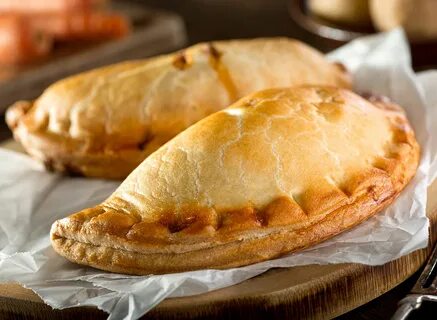
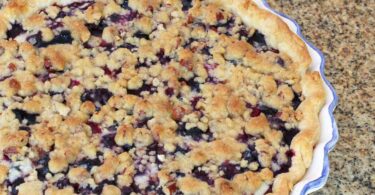
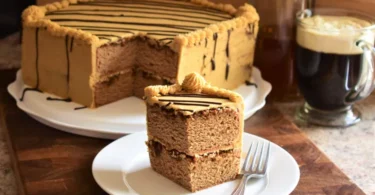
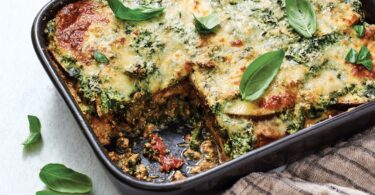
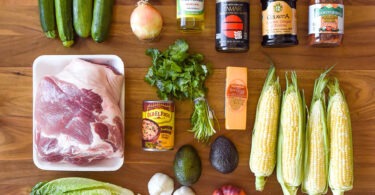
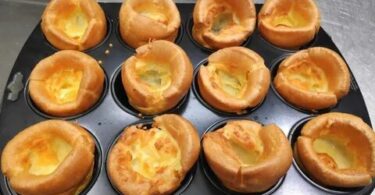

Leave a Comment